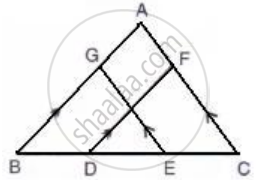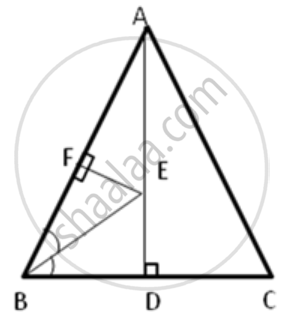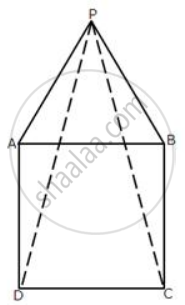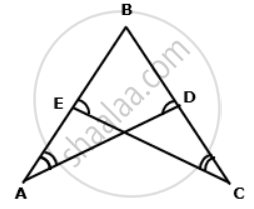Advertisements
Advertisements
प्रश्न
PQRS is a parallelogram. L and M are points on PQ and SR respectively such that PL = MR.
Show that LM and QS bisect each other.
उत्तर

Given: PL = MR ...(i)
To prove SR = PQ ...(ii) (parallelogram opposite sides)
SP - PQ and SR - MR
LQ = SM ...(iii)
In ΔLOQ & ΔMOS
∠LQO = ∠MSO ....( alternate interior angles )
∠OLQ = ∠OMS ....( alternate interior angles )
LQ = SM ...(from (iii))
ΔLOQ ≅ ∠MSO ...(by ASA congruence)
Then, OL = OM
OQ = OS ...(by c.p.c.t.c)
Hence, LM and QS bisect each other.
APPEARS IN
संबंधित प्रश्न
If perpendiculars from any point within an angle on its arms are congruent, prove that it lies on the bisector of that angle.
If ABC and DEF are two triangles such that AC = 2.5 cm, BC = 5 cm, ∠C = 75°, DE = 2.5 cm, DF = 5cm and ∠D = 75°. Are two triangles congruent?
In triangles ABC and CDE, if AC = CE, BC = CD, ∠A = 60°, ∠C = 30° and ∠D = 90°. Are two triangles congruent?
In a triangle ABC, D is mid-point of BC; AD is produced up to E so that DE = AD. Prove that:
AB is parallel to EC.
In the given figure: AB//FD, AC//GE and BD = CE;
prove that:
- BG = DF
- CF = EG

In the following figure, AB = AC and AD is perpendicular to BC. BE bisects angle B and EF is perpendicular to AB.
Prove that: BD = CD

In the parallelogram ABCD, the angles A and C are obtuse. Points X and Y are taken on the diagonal BD such that the angles XAD and YCB are right angles.
Prove that: XA = YC.
In the following diagram, ABCD is a square and APB is an equilateral triangle.
(i) Prove that: ΔAPD ≅ ΔBPC
(ii) Find the angles of ΔDPC.
In the following figure, ∠A = ∠C and AB = BC.
Prove that ΔABD ≅ ΔCBE. 
In a triangle, ABC, AB = BC, AD is perpendicular to side BC and CE is perpendicular to side AB.
Prove that: AD = CE.
